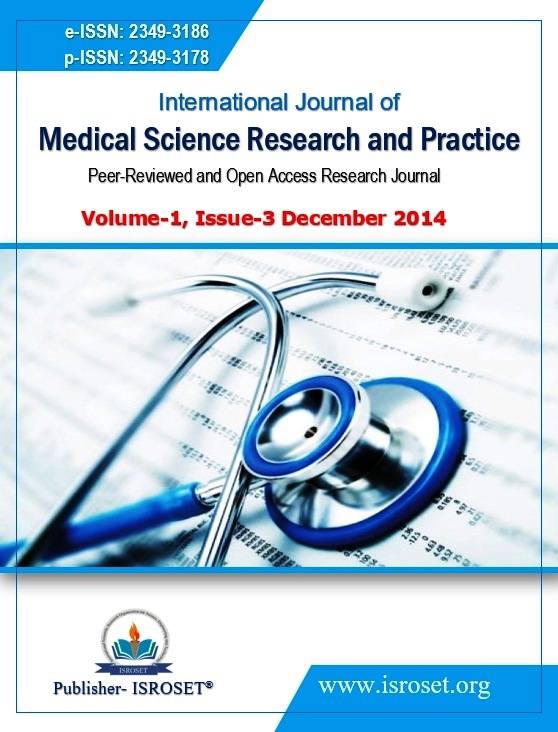Adenocarcinoma: Morphological & Topographical spectrum: a two year analysis
Keywords:
Adenocarcinoma, Glandular epithelium, ICD-O, Morphologic categories, Topographic spectrumAbstract
Aim- To study of adenocarcinoma of various sites and classify them into morphological categories according to International Classification of Diseases for Oncology (ICD-O, Third edition).
Background- The word cancer is enough to strike fear in the heart of any man because it is this one menace that researchers have been unable to curb, It is for this reason that many ideas are thought of and pursued with the hope of unraveling this mystery. In keeping with this a study delineating the morphological and topographical spectrum of adenocarcinoma was carried out in the Department of Pathology MGM Medical College and M Y Hospital Indore, MP, India.
Material Methods- A retrospective study of adenocarcinoma cases diagnosed during last 2 years, from January 2007 to December 2008 was carried out. ICD-O (3rdEd.) was used as reference to categorize the cases according to anatomical site and morphology.
Results- Total 325 cases were included, out of which, the maximum, i.e. 221 cases (68%) of Adenocarcinoma were found between third and fifth decades. The average for males was 48.1 years while for females was 47.8 years. The frequency of Adenocarcinoma was highest among those involving breast (56.50%), followed by those involving digestive system (30.24%). Regarding the topographical distribution of Adenocarcinoma, the maximum number of cases (26.07%) of Adenocarcinoma belonged to ICD-O category C-50 i.e. breast.
Conclusion- As far as the behavior pattern of the Adenocarcinoma was concerned, most of the cases in our study were invasive type. Hence keeping this in mind the topographical spectrum prevalent in the area and having a high index of suspicion can prove to be useful for early detection, treatment, improved survival rate and reduced mortality in such cases.
References
Kumar K, Abbas AK, Fausto N. Robbins & Cotran’s Pathologic Basis of Disease. 7thed. Saunders; 2004
Rosai J. Rosai & Ackerman’s Surgical Pathology. 9 th ed. Mosby; 2004
Andersen JA. Invasive Breast carcinoma with lobular involvement. Frequency & location of lobular carcinoma in situ. Acta Pathol Microbiol Scand A 1974; 82(6): 719-29.
Andersen DE, Smith JL Jr, Mcbride CM. Hereditary aspects of malignant Melanoma. JAMA 1967; 200(9): 741-6.
Anthony PP. Primary carcinoma of the liver. A study of 282 cases in Ugandan Africans. J Pathol 1973; 110(1): 37-48.
Lazcano-Ponce EC, Miquel JF, Munoz N, Herrero R, et al. Epidemiology & molecular pathology of gall bladder cancer. CA Cancer J Clin 2001; 51(6): 349-64.
Diehl AK. Epidemiology of gall bladder cancer. A synthesis of recent data. J Natl Cancer Inst 1980; 65(6): 1209-14.
Berg JW, Howell MA. The geographic pathology of bowel cancer. Cancer 1974; 34(3): suppl: 807-14.
Boyle P, Zaridze DG, Smans M. Descriptive epidemiology of colorectal cancer. Int J Cancer 1985; 36(1): 9-18.
Goodman MT, Matsuno RK, Shvetsov YB. Racial and ethnic variation in the incidence of small-bowel cancer subtypes in the United States, 1995-2008. Dis Colon Rectum 2013; 56(4): 441-8
Devessa SS, Blot WJ, Fraumeni JF Jr. Changing patterns in the incidence of esophageal & gastric carcinoma in the United states. Cancer 1998; 83(10): 2049-53.
Parkin DM. Global cancer statistics in the year 2000. Lancet Oncol 2001; 2(9): 533-43.
Pisani P, Bray F, Parkin DM. Estimates of worldwide prevalence of Cancer for 25 sites in the adult population. Int J Cancer 2002; 97(1): 72-81.
Vieth M, Stolte M. Elevated risk for gastric adenocarcinoma can be predicted from histomorphology. World J Gastroenterol 2006; 12(38): 6109-14.
Theuer CP, Taylor TH, Brewster WR, Campbell BS, Becerra JC, Anton-Culver H. The topography of colorectal cancer varies by race/ethnicity and affects the utility of flexible sigmoidoscopy. Am Surg 2001; 67(12): 1157-61.
de Mascarel I, MacGrogan G, Debled M, Brouste V, Mauriac L. Distinction between isolated tumor cells and micrometastases in breast cancer: is it reliable and useful? Cancer 2008;112(8): 1672-8.
Downloads
Published
How to Cite
Issue
Section
License

This work is licensed under a Creative Commons Attribution 4.0 International License.
Authors contributing to this journal agree to publish their articles under the Creative Commons Attribution 4.0 International License, allowing third parties to share their work (copy, distribute, transmit) and to adapt it, under the condition that the authors are given credit and that in the event of reuse or distribution, the terms of this license are made clear.






